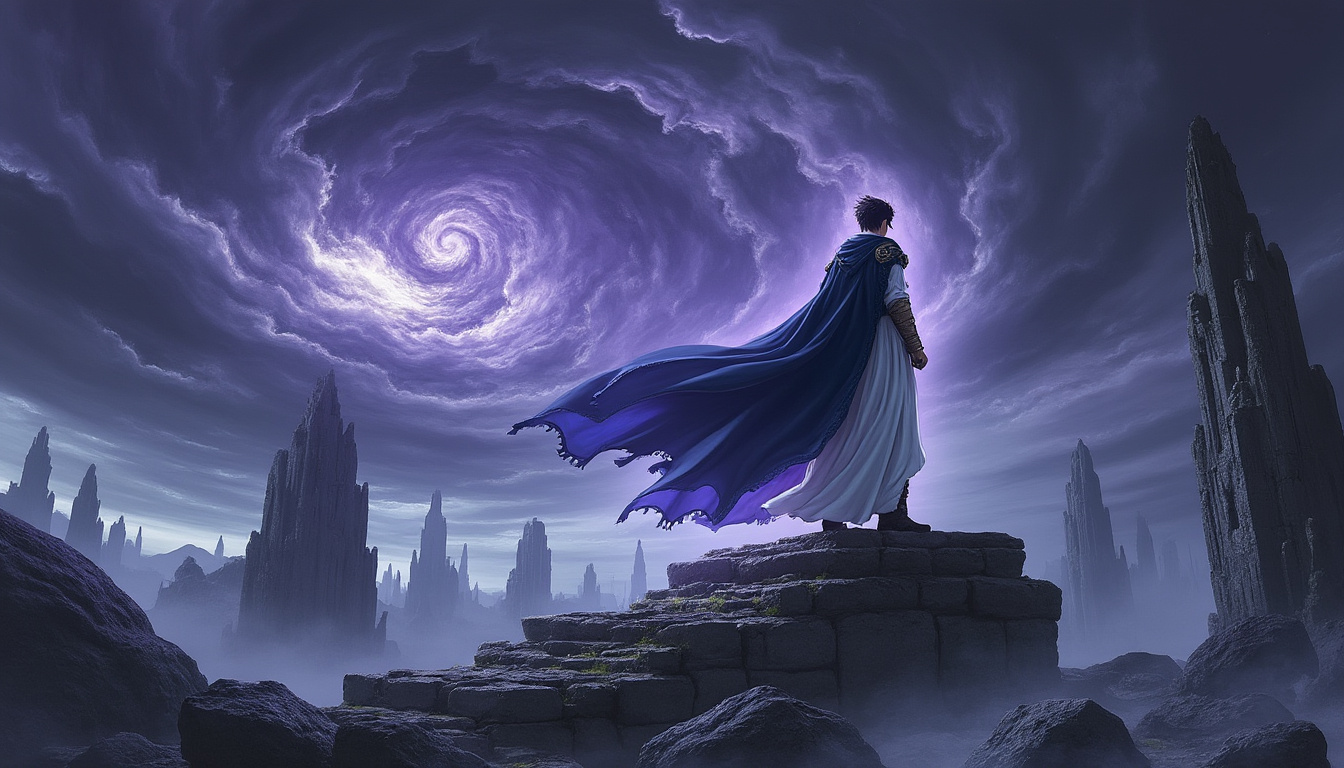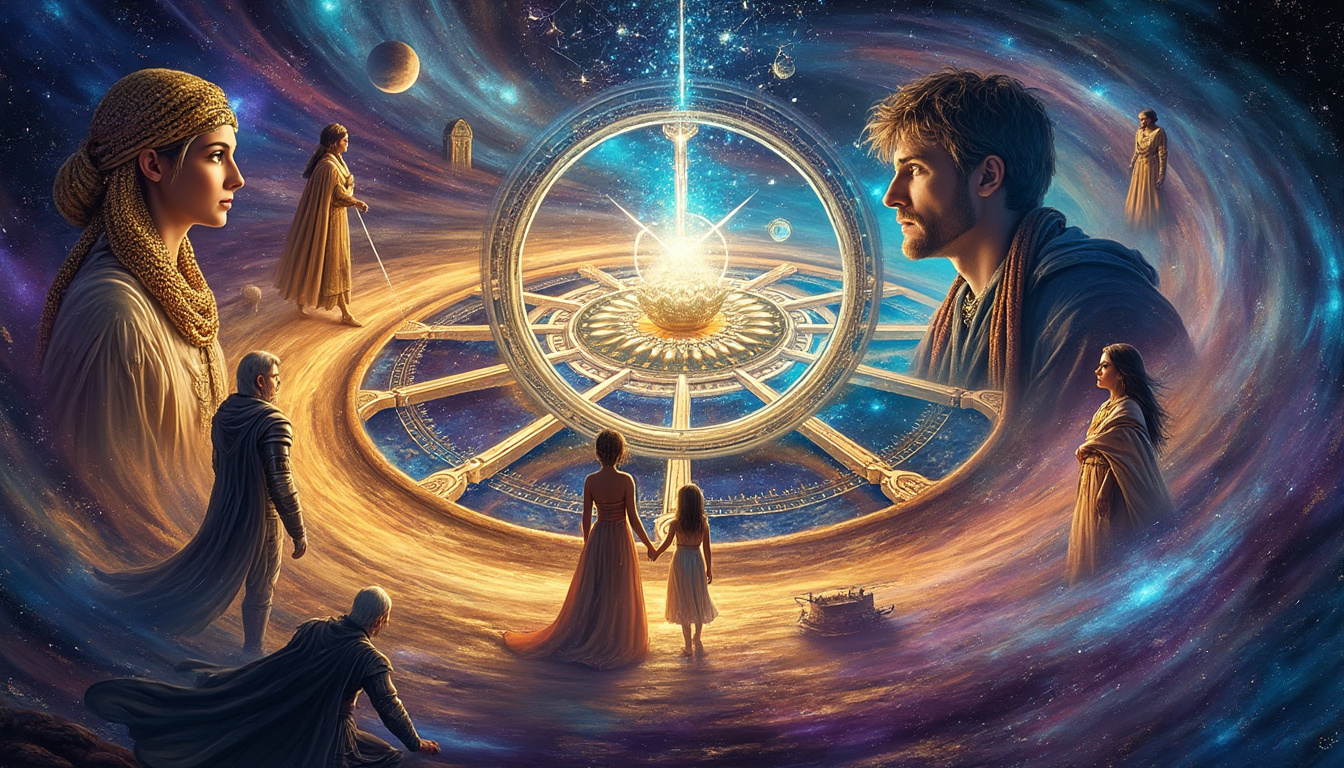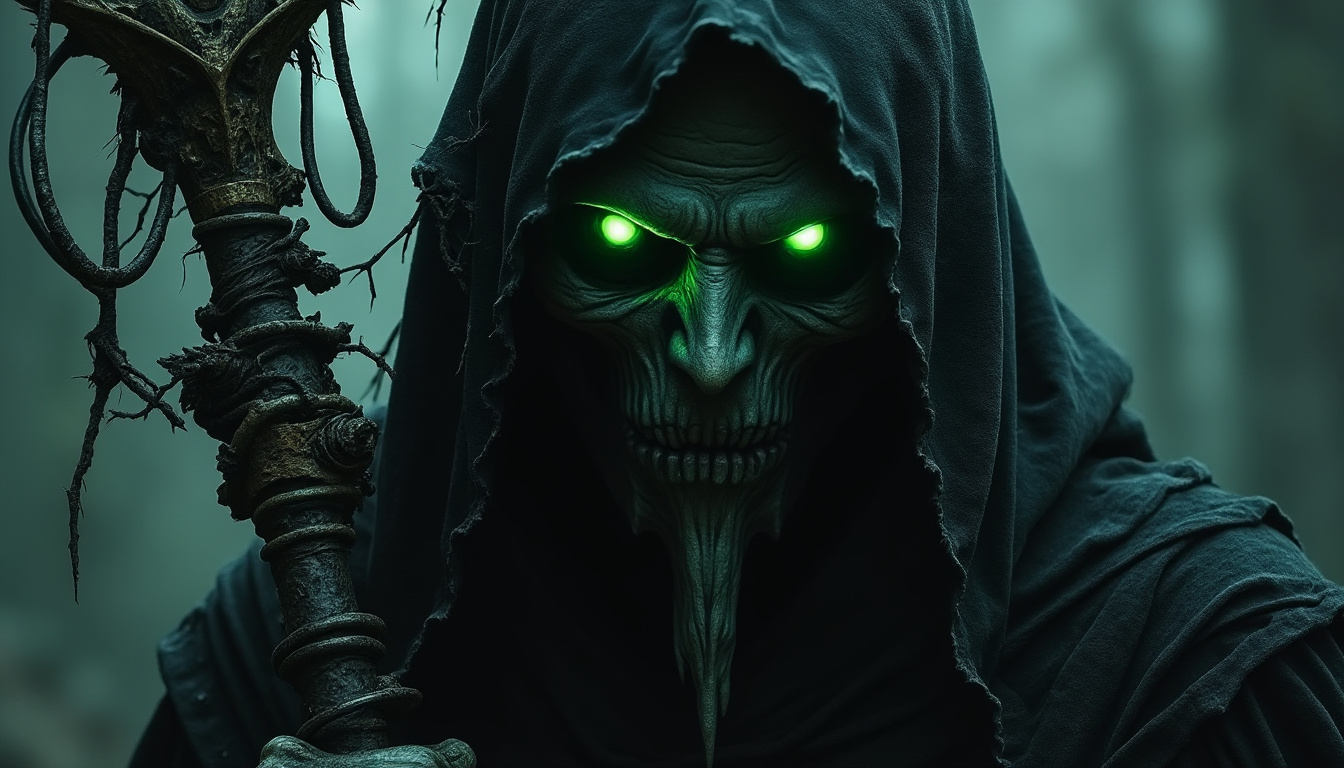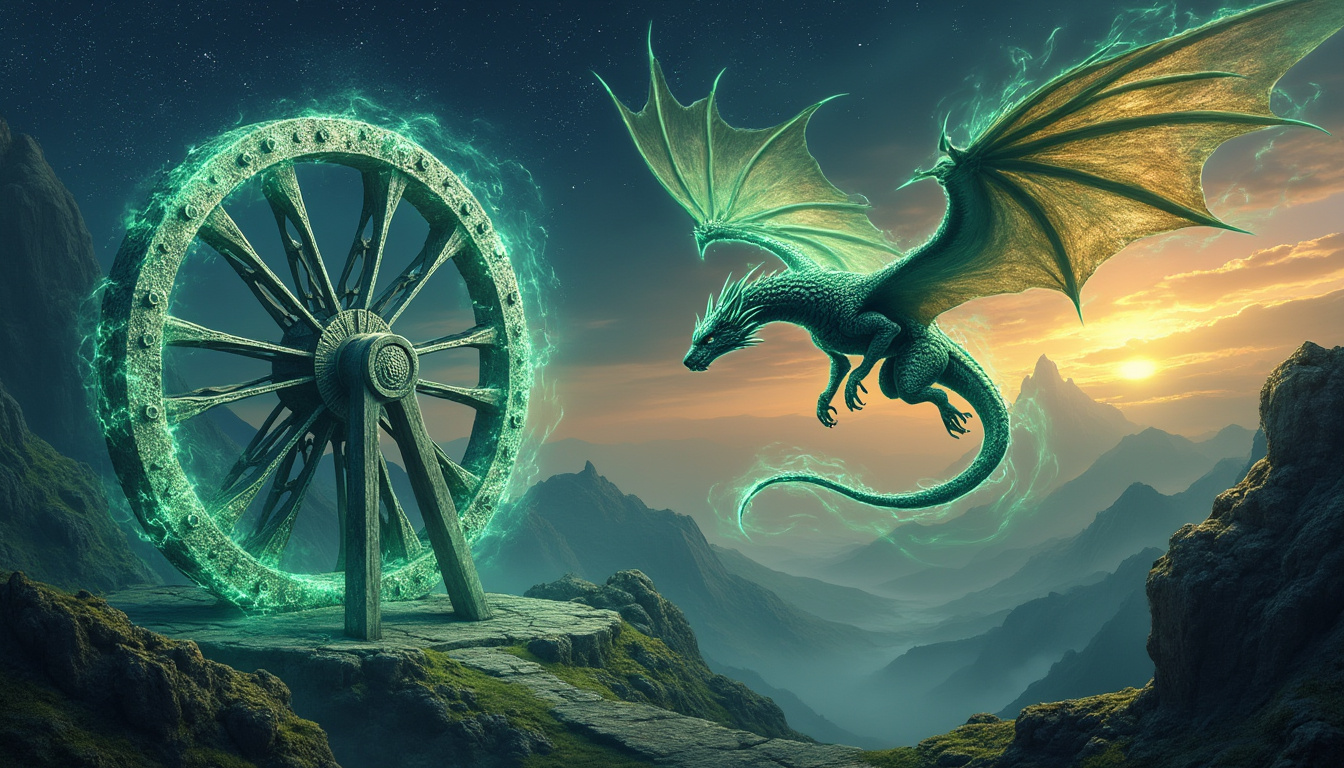Exploring the Mythos of the Dragon Reborn
The world of The Wheel of Time captivates audiences with its intricate lore, extensive character development, and the compelling struggle between light and dark. At the heart of this epic tale lies the enigma of the Dragon Reborn. This character is not merely a protagonist; he embodies the series’ prophecies, destiny, and complex narrative threads. The question of who the Dragon Reborn truly is drives the story forward and influences the fate of countless others in this vast universe.
The narrative of The Wheel of Time set against a fantastical backdrop, examines the life of Rand al’Thor, the individual prophesized to be the Dragon Reborn. As the story unfolds, viewers are drawn into a rich tapestry of magic, conflict, and destiny, exploring themes of power, sacrifice, and the battle against the dark forces that threaten to consume the world.

Understanding the Prophecy of the Dragon Reborn
The prophecy surrounding the Dragon Reborn is rooted in the Karaethon Cycle, a series of ancient texts that outline the foretold events and the role of the Dragon in the struggle between light and darkness. At its core, the prophecy states that the Dragon Reborn is born to either save the world or plunge it into chaos. The legend suggests that he holds immense power and that his actions can alter the fabric of reality itself. These themes are explored through Rand’s journey as he grapples with his identity while battling the looming threat of the Dark One.
Throughout the series, the Dragon Reborn is characterized as a figure of both hope and dread. His emergence signifies a pivotal moment in the world of The Wheel of Time. As views shift between different factions, especially those of the Aes Sedai, the expectations and stakes surrounding Rand’s character deepen. His training under the notable Aes Sedai Moiraine serves not only to enhance his abilities but also to protect him from the seductive nature of power.
The Duality of Power and Responsibility
Rand’s journey as the Dragon Reborn reflects a larger commentary on the duality of power, particularly how absolute strength can corrupt. The character of Rand al’Thor experiences this dichotomy firsthand, embodying a profound struggle as he transitions from a simple farmer to a pivotal player in an epic struggle for survival. The burden of expectation lays heavily upon him, forcing Rand to reconcile his innate abilities alongside the harrowing responsibilities he carries.
As a Ta’veren, a person who can shape the lives of those around them and alter the course of destiny, Rand’s choices resonate throughout the narrative world. His journey is marked by trials that test his values, relationships, and ultimately, his sanity. The nuanced exploration of his character development adds depth to the overarching story, making it crucial to understanding the essence of the Dragon Reborn.
The Nature of the Dark One and Forsaken
The Dark One acts as the central antagonist in the series, representing the chaos and destruction that the Dragon Reborn must combat. His influence extends beyond mere physical confrontations; he sows discord and despair throughout the realm. This perpetual threat is compounded by the presence of the Forsaken, powerful servants of darkness who embody the complexities of evil. Each Forsaken was once a significant figure in history, but their pursuit of power has transformed them into something fundamentally wicked.
The battles between pieces of light and darkness highlight not only Rand’s abilities but also his internal conflict. The challenge of confronting these formidable enemies represents an external struggle against the forces wanting to destabilize all that is good and just. It allows for rich character interactions and growth, whether through unexpected alliances or brutal betrayals.
The Impact of Reincarnation in the Series
Reincarnation is a fundamental concept within the lore of The Wheel of Time. It speaks to the cyclical nature of life, death, and rebirth, emphasizing that while the Dragon Reborn may change forms, the essence of his mission remains constant. The original Dragon, Lews Therin Telamon, serves as a rich historical figure whose past haunts Rand and shapes his actions. Understanding this lineage amplifies the emotional stakes at play and emphasizes the burdens carried through generations.

The Weight of Legacy on Rand al’Thor
Rand’s inheritance of the Dragon legacy extends beyond mere titles; it influences his decisions, relationships, and ultimately, his view of humanity. Visions of Lews Therin manifest in moments of crisis, weighing heavily on Rand’s psyche. The narrative poignantly showcases the inner turmoil caused by the expectations tied to his lineage, revealing how the past can shape one’s present.
While each Dragon Reborn is unique in character and intention, they invariably echo the struggles of their predecessors. This interplay between history and destiny raises questions about autonomy versus predestination in the lifecycle of the Dragon. The concept that the wheel spins, bringing forth heroes to face evolving yet similar challenges, captures the essence of the narrative’s richness and complexity.
Fulfilling the Prophecy: The Role of Friends and Allies
Support from allies plays an instrumental role in Rand’s journey. Each character, from the fiercely loyal Mat Cauthon to the wise Egwene al’Vere, contributes to Rand’s path and growth as the Dragon Reborn. The bonds forged between these characters deepen throughout their struggles, showcasing the idea that collective strength is essential when facing overwhelming odds.
Equally important is the character of Moiraine, the Aes Sedai dedicated to guiding Rand. Her commitment to navigating the political machinations and training of Rand illuminates the intricate dynamics between mentorship and destiny. Moiraine’s interventions are pivotal in steering Rand toward a path of fulfillment while reminding him of the consequences of his choices.
The Complexities of the Forsaken and Dark Forces
The presence of the Forsaken introduces layers of complexity to the conflict faced by Rand and his allies. Each Forsaken embodies unique traits and serves different purposes in the grand scheme of chaos and conflict initiated by the Dark One. These characters are depicted as both threat and tragic figures, revealing their struggles between ambition, loyalty, and the repercussions of their choices.

Dynamics of Power: The Forsaken and Their Influence
The struggle against the Forsaken reflects various facets of human nature and the choices that define one’s destiny. Each character within this cadre offers a different lens through which to view morality, sacrifice, and the corrupting influence of power. These encounters are critical to establishing Rand’s identity not merely as a warrior but as a representative of hope amidst despair.
The lore surrounding The Forsaken draws attention to their intricate histories and motivations. Characters like Lanfear and Moghedien explore themes of love, betrayal, ambition, and retribution. Each confrontation with these foes serves to challenge Rand’s understanding of morality and friendship, reinforcing the notion that clarity in a world of shadows can often be obscured.
The Final Confrontation: Tarmon Gai’don Awaits
As events become increasingly fraught, the stage is set for the ultimate confrontation at Tarmon Gai’don. This climactic battle is central to the prophetic narrative, as the Dragon Reborn must face not only the Dark One but also himself. The culmination of all tensions, struggles, and choices leads to this defining moment where the fate of the world hangs delicately in the balance.
Tarmon Gai’don encapsulates the essence of the struggle between light and darkness, where the true power of the Dragon will be tested. It is a moment of reckoning, not just in a physical sense, but also spiritually, as Rand grapples with the untold realities of choice and sacrifice. This confrontation promises to be as complex as the very fabric of The Wheel of Time universe itself.
The Community Response: Fandom and Theories
The cultural impact of The Wheel of Time and the enigma of the Dragon Reborn extend beyond its pages and screens. Fandom numbers in the millions, with devoted followers actively engaging in discussions surrounding character arcs, plot twists, and intricate theories that reflect their collective investment in the story. The speculation regarding Rand al’Thor’s fate and what it means for the future of the series creates a dynamic environment where fans contribute to the lore.
Fan Theories and Speculations
The rich narrative of The Wheel of Time lends itself to countless fan theories that debate the significance of the Dragon Reborn’s legacy. Discussions range from theoretical interpretations of the prophecies, especially the prophecies of the Dragon, to deeper examinations of character motivations and outcomes. These insights foster a sense of community and excitement surrounding the series, revealing the profound impact of its storytelling.
Such theorizing has created a unique atmosphere where fans unite to explore what it means for their beloved characters and the ultimate fate of the world steeped in legends. The existence of platforms for fan engagement symbolizes the broader significance of moral choices and their consequences that extend far beyond fiction.
Social Media and the Wheel of Time Community
Social media platforms have served as a conduit for fans to share their passion, theories, and creative expressions inspired by the series. From dedicated Twitter threads to Instagram posts, the vibrant community reflects a collective fascination with the world of The Wheel of Time. This sphere of interaction fuels ongoing discussions about character growth, the complexities of the narrative, and highlights the show’s cultural relevance.
The Future of The Wheel of Time: Anticipating Season 3
As anticipation for Season 3 of The Wheel of Time builds, the resonance of the Dragon Reborn prophecy remains a focal point of interest. Examining Rand’s character along with the implications of his identity introduces exciting conversation surrounding potential plot trajectories and character development. The question of how the new season will unfold in relation to the lore established thus far keeps fans abuzz with theories.
A multitude of expectations surrounds the forthcoming season, particularly with regard to how it will address Rand’s growing powers, emotional complexity, and the inevitable confrontation with his enemies. Will the portrayal of the Dragon Reborn align with fan predictions, or will it take unexpected avenues?
The Evolution of Characters in Fan Theories
Season 3 promises to further develop the relationships among the ensemble cast, showcasing how these interactions shape the Dragon Reborn and influence his journey. Fans speculate on the growth trajectories of secondary characters and how they will counterbalance Rand’s tumultuous path. This is essential not only to the plot’s integrity but also to deepening the emotional stakes involved in the battle between light and dark.
The richness of character evolution is a significant reason the series resonates with so many viewers. The anticipation for Season 3 builds excitement for what lies ahead, and fans engage in dialogues that reflect not only their investment in the story but also an exploration of human dilemmas through its characters.
Conclusion: The Dragon Reborn as a Cultural Icon
The concept of the Dragon Reborn extends beyond the confines of its narrative, becoming a cultural icon in its own right. The themes interwoven in Rand’s journey speak to the universal struggle for identity, the weight of legacy, and the choices that define who we are. In this light, the Wheel of Time transcends mere fantasy storytelling, offering profound insights into the complexities of humanity.
As audiences eagerly await the next installment, they remain captivated by the intricate dance of prophecy and choice, the challenge of understanding one’s own potential, and the intricate balance of light and darkness that resonates throughout The Wheel of Time.


